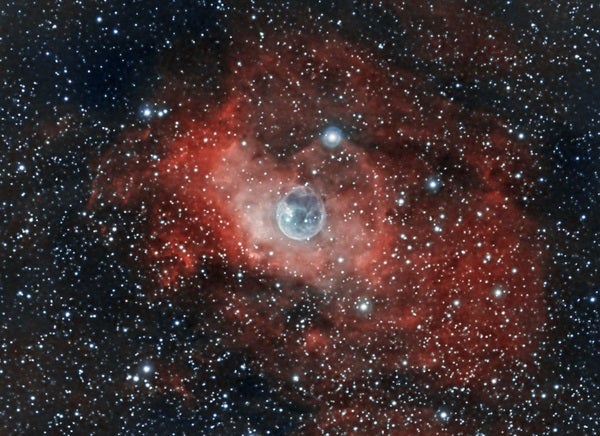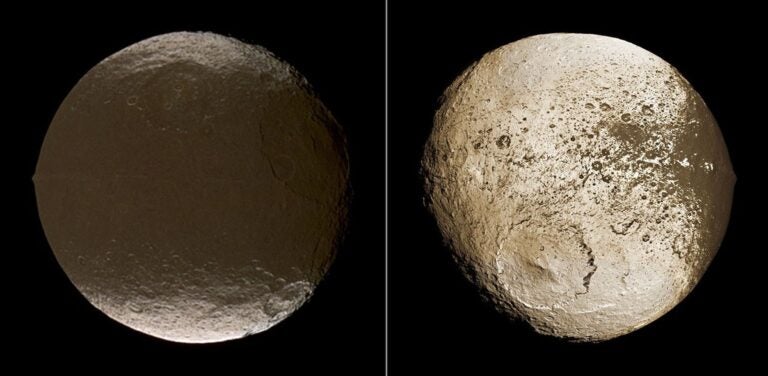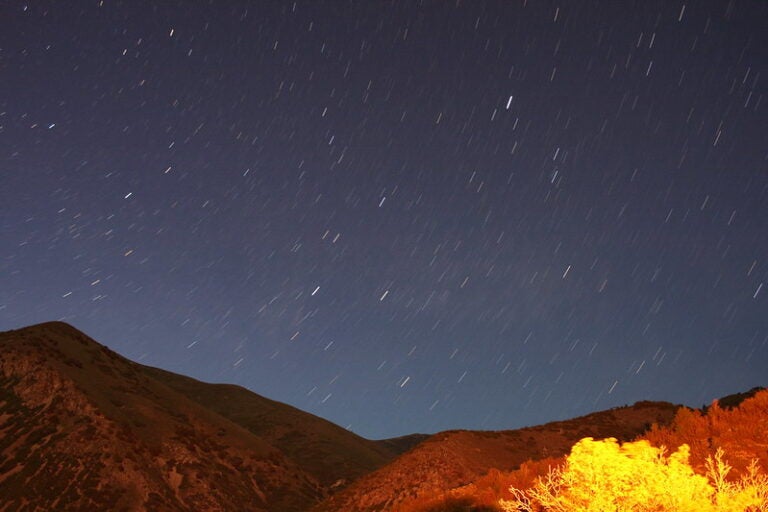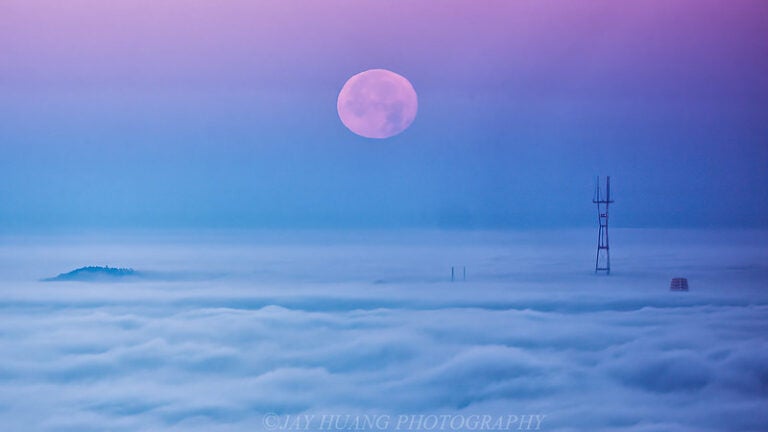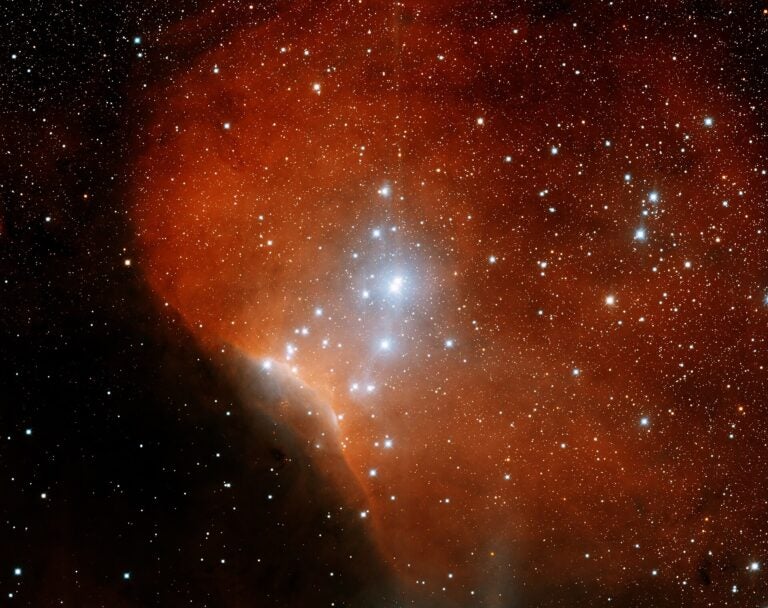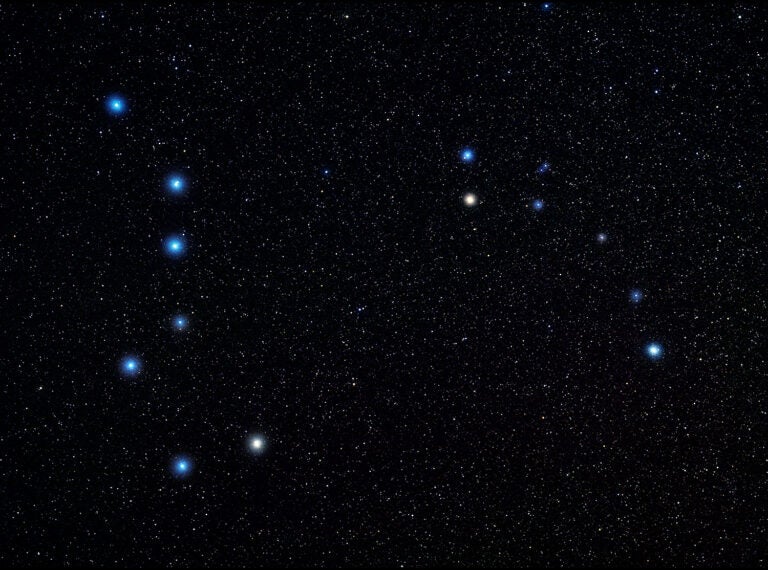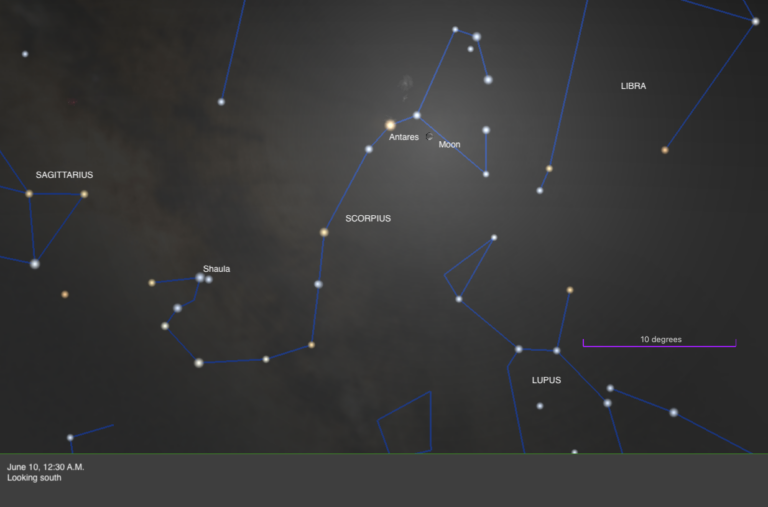William Herschel first observed NGC 7635 in 1787 as a glow around the magnitude 8.7 star SAO 20575 (cataloged earlier as BD+60°2522). In a telescope, the Bubble Nebula looks more like a comma because the full extent of its spherical shell is so faint that it was only discovered through photography. This emission nebula, which is composed of ionized hydrogen energized by an O-type star, is part of a larger complex of glowing gases.
Viewing the Bubble Nebula requires skies free of light pollution. A Hydrogen-II filter or UHC filter are helpful in bringing out detail. If you observe under extremely dark skies, this nebula can be seen in a 6-inch telescope. It is one of those objects that benefits from increased aperture.
Finding NGC 7635 is easy — it lies about 0.5° from the Cepheus border in Cassiopeia. If you can find the bright open cluster M52, scan less than a degree southwest and you may find the Bubble’s pale hydrogen glow. It is equidistant from the HII region NGC 7538, located to the Bubble’s northwest. The Bubble Nebula is 15′ by 8′ with a visual magnitude of about 10, although that light is spread out, making it appear much fainter. A 7th-magnitude star in the area can interfere with an observer’s ability to get fully dark adapted.
The star SAO 20575 is the creator of the Bubble Nebula and is estimated to weigh 45 solar masses. Its peculiar spectral classification of O6.5 indicates its surface temperature is a whopping 67,000 degrees Fahrenheit (37,200 degrees Celsius). Astronomers also estimate this star is losing mass at a rate of 1 solar mass every million years. The Bubble Nebula itself marks the edge of a shock wave interacting with the hydrogen atoms in the interstellar medium.
The Bubble Nebula falls within the Cassiopeia OB2 stellar association — a group of young, hot stars that formed together and live fast and die hard. The nebula and stellar association lie some 7,000 to 8,000 light-years from us, in the Perseus Arm.
Make sure to explore Astronomy’s full list of 101 cosmic objects you must see. New entries will be added each week throughout 2022.
To get the latest astronomical news and observing content delivered directly to your door, subscribe to Astronomy magazine today!

